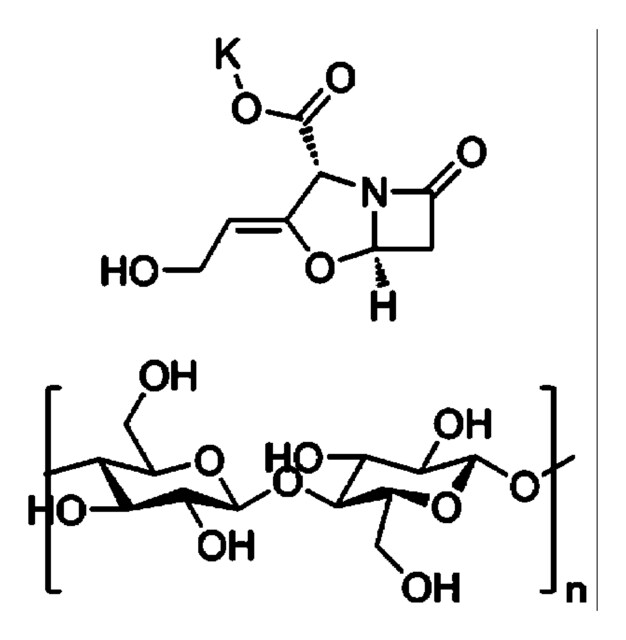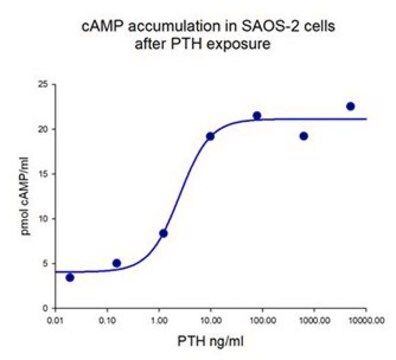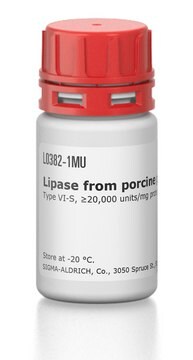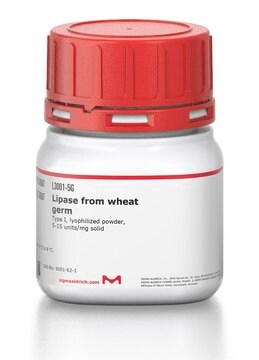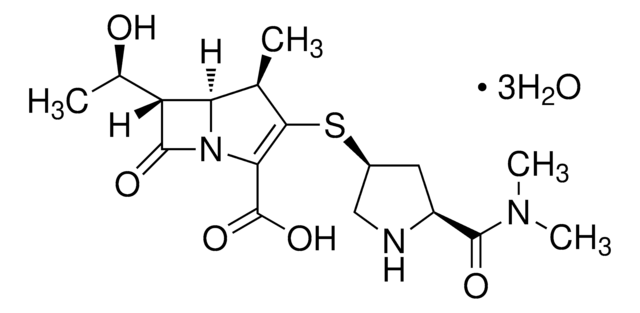Recommended Products
form
powder or crystals
antibiotic activity spectrum
Gram-negative bacteria
Gram-positive bacteria
Mode of action
enzyme | inhibits
storage temp.
2-8°C
Application
Clavulanate is used as an inhibitor of bacterial β-lactamase enzymes. It is produced by the fermentation of Streptomyces clavuligerus. It has weak antibacterial activity when used alone but is very active when used with amoxicillin. With Amoxicillin, it is used to treat infections caused by Staph. aureus, Bacteroides fragilis, H. influenza and E. coli.. It has been used to treat acute bacterial sinusitis in children and chronic adenotonsillar hypertrophy.
Biochem/physiol Actions
Clavulanate is a β-lactam antibiotic related to the penicillins. Clavulanic acid competitively and irreversibly inhibits a wide variety of β-lactamases which are commonly found in microorganisms that are resistant to penicillins and cephalosporins. Clavulanate also is a modulator of the central nervous system. It enhances dopamine release in PC12 and SH-SY5Y cells without affecting dopamine synthesis.
Clavulanate is a β-lactamase inhibitor often used to enhance the antibacterial activity of amoxicillin.
Other Notes
Mixture of potassium clavulanate and cellulose
Keep container tightly closed in a dry and well-ventilated place. Never allow product to get in contact with water during storage.Heat sensitive. Storage class (TRGS 510): Flammable solid hazardous materials.
Signal Word
Danger
Hazard Statements
Precautionary Statements
Hazard Classifications
Resp. Sens. 1 - Skin Sens. 1
Supplementary Hazards
Storage Class Code
13 - Non Combustible Solids
WGK
WGK 2
Flash Point(F)
Not applicable
Flash Point(C)
Not applicable
Certificates of Analysis (COA)
Search for Certificates of Analysis (COA) by entering the products Lot/Batch Number. Lot and Batch Numbers can be found on a product’s label following the words ‘Lot’ or ‘Batch’.
Already Own This Product?
Find documentation for the products that you have recently purchased in the Document Library.
Customers Also Viewed
B Rossi et al.
Antimicrobial agents and chemotherapy, 60(1), 424-430 (2015-11-04)
We investigated the efficacies of cefotaxime (CTX) and amoxicillin (AMX)-clavulanate (CLA) (AMC) against extended-spectrum-β-lactamase (ESBL)-producing Escherichia coli in vitro and in a murine model of urinary tract infection (UTI). MICs, the checkerboard dilution method, and time-kill curves were used to
Ellen R Wald et al.
Pediatrics, 124(1), 9-15 (2009-07-01)
The role of antibiotic therapy in managing acute bacterial sinusitis (ABS) in children is controversial. The purpose of this study was to determine the effectiveness of high-dose amoxicillin/potassium clavulanate in the treatment of children diagnosed with ABS. This was a
Gina Chun Kost et al.
Neuroscience letters, 504(2), 170-175 (2011-10-04)
Clavulanic acid is a CNS-modulating compound with exceptional blood-brain barrier permeability and safety profile. Clavulanic acid has been proposed to have anti-depressant activity and is currently entering Phase IIb clinical trials for the treatment of Major Depressive Disorder (MDD). Studies
A P Sclafani et al.
Pediatrics, 101(4 Pt 1), 675-681 (1998-04-29)
To evaluate the short- and long-term effects of treatment of symptomatic chronic adenotonsillar hypertrophy (CATH) with a 30-day course of amoxicillin/clavulanate potassium (AMOX/CLAV). Children 2 to 16 years of age with obstructive symptoms attributable to CATH, who did not have
Alasdair M Geddes et al.
International journal of antimicrobial agents, 30 Suppl 2, S109-S112 (2007-09-29)
Infections are currently ranked as the leading global burden of disease with respiratory diseases playing the most significant role. Antibiotic resistance remains a serious problem, as it was even 50 years ago. The 1970s saw the introduction of a number
Our team of scientists has experience in all areas of research including Life Science, Material Science, Chemical Synthesis, Chromatography, Analytical and many others.
Contact Technical Service

